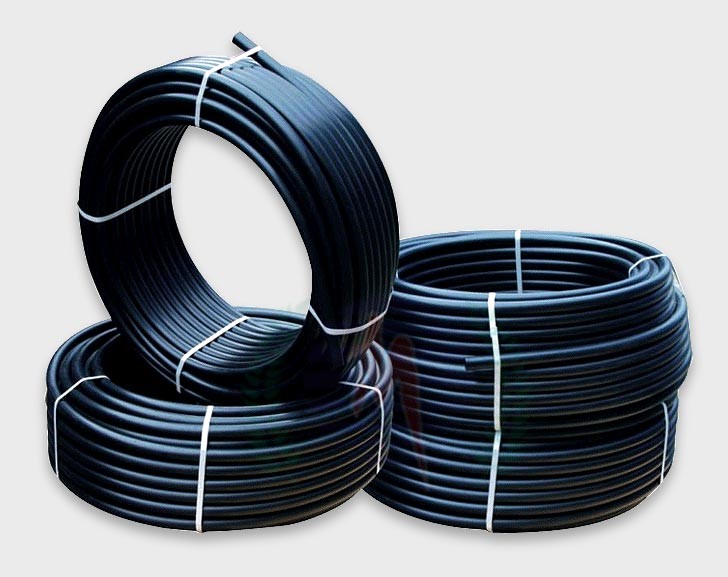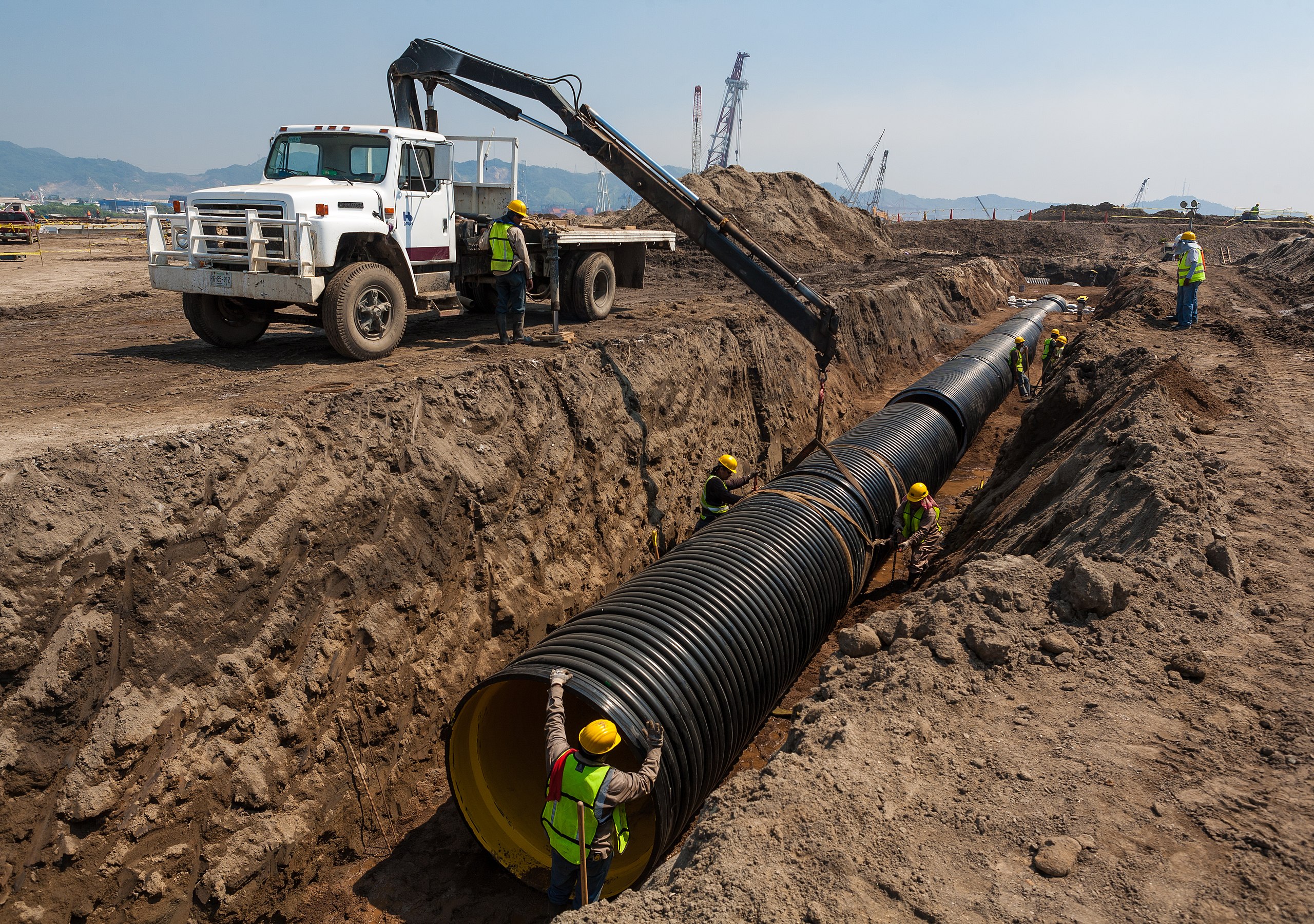Where to Source Midland TX HDPE Pipe Fittings in Stock for Fast Installation
Explore the Manufacturing Process Behind High-Quality HDPE Pipeline and Its Applications
The manufacturing procedure of premium HDPE pipelines is intricate and methodical. It starts with the option of resources that enhance performance. Following this, ethylene undergoes polymerization to develop resin, which is after that shaped via extrusion. Quality assurance is vital, guaranteeing that the end product fulfills rigid standards. The journey of HDPE pipes does not finish with production. Their applications across numerous industries expose a broader value worth examining.
Recognizing HDPE: Properties and Advantages

High-density polyethylene (HDPE) is a versatile polycarbonate known for its sturdiness and resistance to various environmental variables. This product exhibits superb tensile toughness, making it ideal for demanding applications. Its low-density structure adds to a light-weight item, helping with ease of managing and setup. HDPE likewise showcases impressive resistance to chemicals, which lessens degradation when subjected to harsh compounds.
The product's low moisture absorption additionally boosts its long life, making it perfect for use in pipes and tank. Additionally, HDPE is resistant to ultraviolet (UV) radiation, ensuring that items keep their honesty also when subjected to sunlight. Its adaptability enables for the production of detailed shapes without endangering stamina. The green nature of HDPE, usually originated from recycled products, adds to its charm, advertising sustainable practices in production. Generally, these properties and advantages make HDPE a preferred option for various industrial and consumer applications.
Basic Material Selection for HDPE Manufacturing
The choice of resources for HDPE production is necessary to confirm the end product fulfills the preferred requirements and quality criteria. High-density polyethylene (HDPE) is mainly generated from polymerized ethylene, derived from fossil fuels such as gas or petroleum. The high quality of these feedstocks substantially affects the mechanical and thermal residential properties of the final HDPE.
Ingredients additionally play a substantial function in enhancing HDPE's performance, consisting of anti-oxidants, UV stabilizers, and colorants, which boost durability and resistance to ecological aspects. The choice procedure must take into consideration not just the chemical structure of the raw materials however additionally their processing attributes to ensure reliable production.
Furthermore, the sourcing of basic materials ought to prioritize sustainability and compliance with environmental regulations, as liable techniques are critical in today's market. Inevitably, mindful resources choice lays the foundation for generating premium HDPE pipes suitable for varied applications.
The Extrusion Refine: Forming HDPE Pipeline
The extrusion process plays an important function in shaping HDPE pipes, starting with meticulous product prep work techniques that guarantee optimal flow and consistency. Similarly crucial is the style of the die, which straight affects the final measurements and surface area high quality of the pipeline. Together, these variables contribute substantially to the performance and top quality of HDPE pipe manufacturing.
Product Preparation Strategies
Reliable manufacturing of HDPE pipes begins with careful material preparation techniques, specifically the extrusion process. During this phase, high-density polyethylene resin is first dried out to remove dampness, making certain excellent circulation qualities. The resin is after that fed into the extruder, where it undertakes home heating and melting, changing into a viscous state. This home heating process is thoroughly managed to maintain the product's stability and efficiency. The molten HDPE is compelled with a die, forming it right into a continuous pipeline form. Correct temperature level administration during extrusion is necessary, as it directly affects the product's residential or commercial properties and the last product high quality. When formed, the HDPE pipe is cooled and cut to specified sizes, ready for subsequent handling and applications.
Die Style Importance
Accuracy in die design plays an important role in the extrusion procedure of HDPE pipelines. The die acts as the final shaping device, straight influencing the pipeline's dimensions, wall surface thickness, and surface area finish. A well-designed die guarantees uniform material circulation, minimizing problems such as abnormalities and weak areas. The geometry of the die should be maximized to fit the specific properties of HDPE, including its viscosity and thermal habits throughout extrusion. Furthermore, the cooling rate of the material as it goes through the die can noticeably influence the pipeline's architectural integrity. As a result, investing in innovative die innovation is crucial for suppliers aiming to produce premium HDPE pipelines that fulfill sector standards and client assumptions.
Quality Control Steps in HDPE Manufacturing
Various aspects influence the quality of HDPE pipe manufacturing, effective quality control measures are important to guarantee consistency and integrity in the last item (Texas hdpe pipe manufacturer). Trick quality assurance methods include rigorous product examination, confirming that the raw polyethylene fulfills established requirements for purity and thickness. During the extrusion procedure, specifications such as temperature, pressure, and cooling time are closely monitored to keep dimensional accuracy and architectural integrity
In enhancement, post-production screening is essential; manufacturers usually carry out hydrostatic examinations to assess the pipe's toughness and resistance to stress. Visual inspections for surface issues additionally enhance quality control. Accreditation from appropriate requirements companies, like ASTM or ISO, gives an additional layer of reputation. By implementing these complete quality control procedures, producers can lessen issues, enhance efficiency, and make sure that the HDPE pipes fulfill the particular demands of various applications, ultimately resulting in consumer complete satisfaction and depend on in the item.
Applications of HDPE Pipe Throughout Industries
HDPE pipes are utilized throughout various industries because of their toughness and flexibility. In water distribution systems, they guarantee effective delivery, while in wastewater management, they offer trusted remedies for waste transport. Furthermore, farming watering networks profit from HDPE's resistance to deterioration and flexibility, making it a suitable option for contemporary farming practices.

Water Distribution Systems
A significant variety of markets rely on high-density polyethylene (HDPE) pipelines for effective water distribution systems. Understood for their durability and resistance to rust, HDPE pipelines are widely made use of in local supply of water networks, farming irrigation, and industrial applications. Their light-weight nature helps with easy handling and installment, lowering labor costs and time. Furthermore, HDPE pipes can suit various pressure levels, making them ideal for both low and high-pressure systems. hdpe pipe fittings Midland TX. The versatility of the product enables for smooth integration into existing infrastructure, decreasing the need for considerable excavation. HDPE's resistance to chemical leaching warranties that the water supplied stays secure and tidy, making it an optimal choice for preserving the quality of drinkable water throughout numerous fields.
Wastewater Management Solutions
Efficient water distribution systems additionally lead the way for cutting-edge wastewater monitoring remedies, where high-density polyethylene (HDPE) pipelines play a considerable function. Prominent for their longevity and resistance to rust, HDPE pipelines are optimal for transporting wastewater in numerous settings. Their adaptability allows for easy installment in complex environments, decreasing the requirement for considerable excavation. Additionally, HDPE's smooth interior surface reduces rubbing, boosting circulation prices and efficiency. These pipelines are likewise resistant to chemical leaching, ensuring that impurities do not endanger the surrounding atmosphere. Industries, towns, and therapy facilities significantly count on HDPE pipes for their dependability and durability, making them a favored option for modern wastewater administration systems. This versatility underscores the crucial significance of HDPE pipes across countless applications.
Agricultural Watering Networks
Agricultural irrigation networks profit substantially from making use of high-density polyethylene (HDPE) pipelines, which provide reliable and trusted water distribution to crops. HDPE pipes are light-weight, making them very easy to transport and this set up, while their versatility permits various setups in diverse terrains. These pipelines show exceptional resistance to rust, chemicals, and UV radiation, guaranteeing sturdiness in rough farming atmospheres. In addition, their smooth indoor surface reduces friction loss, optimizing water circulation and decreasing energy prices connected with pumping. The longevity of HDPE pipelines, often exceeding half a century, contributes to reduce upkeep and substitute costs. Subsequently, farmers increasingly depend on HDPE pipelines to enhance irrigation effectiveness and advertise sustainable agricultural methods, inevitably bring about enhanced plant returns and resource preservation.
Future Patterns in HDPE Pipeline Technology
As the demand for sustainable and effective framework grows, improvements in HDPE pipeline modern technology are positioned to change numerous sectors. Emerging trends consist of the combination of wise technologies, such as sensors and IoT abilities, which assist in real-time surveillance of pipeline problems, lowering upkeep expenses and stopping leaks. Furthermore, the advancement of innovative production techniques, such as 3D printing, is making it possible for the production of complex, customized pipeline styles that satisfy certain task needs.
The focus on recycling and circular economic climate techniques is driving the development of HDPE pipelines made from recycled products, boosting sustainability. Enhanced jointing techniques, such as electro-fusion and mechanical fittings, are additionally improving installation efficiency and dependability. Lastly, the growing emphasis on ecological guidelines is pushing suppliers to embrace greener production procedures, guaranteeing that HDPE pipelines not just meet market requirements yet likewise cultivate a more lasting future for facilities growth.
Frequently Asked Concerns
How Does HDPE Contrast to Various Other Plastic Materials?
HDPE surpasses many other plastic materials relating to longevity, chemical resistance, and flexibility. Its low thickness and high tensile toughness make it suitable for different applications, usually exceeding options in both performance and longevity.
What Are the Environmental Influences of HDPE Production?
The ecological influences of HDPE manufacturing consist of greenhouse gas emissions, power usage, and potential pollution from manufacturing procedures. Furthermore, improper disposal can result in dirt and water contamination, increasing issues about long-lasting ecological results.
Can HDPE Water Lines Be Recycled?
Yes, HDPE pipes can be recycled. Numerous facilities accept made use of HDPE for handling, transforming it into brand-new items. This recycling contributes to sustainability initiatives, visit lowering plastic waste while conserving resources and power in the production cycle.
What Is the Life Expectancy of HDPE Pipes?

Exactly How Do Temperature Level Variants Influence HDPE Pipeline Performance?
Temperature variations significantly affect HDPE pipe efficiency, affecting flexibility and strength. Heats can cause softening, while reduced temperatures may trigger brittleness, inevitably influencing the pipeline's toughness and viability for different applications in varied settings.